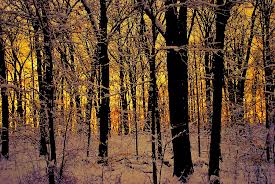Baby, it’s getting cold outside!
But does that stop the intrepid outdoors person? Of course not! Hiking in the cold offers plenty of rewards and a different routine to normal spring and summer excursions. Sometimes it can turn a favorite trail into an entirely new experience with the changes in leaves, landscapes, and wildlife. Not to mention, there’s less worry about bugs, crowds, and acquiring those coveted permits. However, hiking in the fall and winter months brings its own set of unique challenges with the drop in temperatures. Cooking can be one of the biggest ones, especially with ultralight alcohol and fuel tab stoves, yet it’s more important than ever in order to keep you warm and energized. Colder temps sap heat energy from stoves, cooking pots, and especially you so gaining and maintaining heat is critical to cooking well and fully enjoying your trip.
But no fret! Here are some handy cold weather cooking tips to make your fall and winter excursions just as fun and successful as the warmer times of year:
1. Warm up fuel inside a jacket (if using denatured alcohol) to help vaporize the fuel. Be sure to use a spill proof container! Alcohol doesn’t vaporize well in colder temperatures making it difficult to light with anything less than a steady flame. Or simply use a fuel tab stove, like the Triad XE, which will work well in cold temperatures. Esbit fuel tabs are a popular choice.
2. Cook in an insulated cooking area protected from the wind and elements. Build a wall of rocks, sticks, snow, or anything you can find around your stove to improve cooking efficiency. Cooking in your tent or shelter is not recommended due to potential fuel spill risks.
3. Insulate your stove from the cold ground beneath it. Doing so will allow your stove to prime much faster and ensure more heat is directed towards your pot. Use a piece of aluminum foil or a small pie tin under the stove to help insulate it. If necessary, you can spray a small amount of alcohol on these and light it to help prime the stove. You can also use the stove on a hard, flat, fireproof surface (i.e. a flat rock) but be sure to fold the legs under the Triad and Triad XE to increase stability.

4. Use a windscreen closely wrapped around the pot–without restricting air flow–to block wind and efficiently transfer more heat to your pot. Be careful to not allow the stove to overheat and boil over.
5. Blacken the bottoms of cooking pots and pans with either barbecue paint or by charring over a fire. This has been shown to slightly improve boiling times by several seconds, which, in the long haul, will save on fuel.

6. Use a pot parka to significantly reduce cooking times. Pot parkas help keep as much heat around the pot as possible and are helpful in baking (more on baking in future posts!). Be sure to allow venting in order to maintain airflow and prevent the stove from overheating.

7. Use a pot cozy to help cook and keep food hotter longer without wasting additional fuel. For instance, try boiling your pasta for only a minute or two and place it in a pot cozy to continue cooking. Check on it every few minutes until it reaches your desired al dente texture. Continue using the stove to boil water for coffee or extinguish it and returned the unused fuel into your fuel bottle. If just boiling water for a meal, boil extra water for clean up and keep it hot in the cozy while you eat. Cozies are also handy to prevent burns while eating out of a hot pot. You can buy ones designed for Vargo pots and mugs here; make one yourself from easy-to-find, cheap materials (check YouTube for helpful how-to videos); or use a jacket, shirt, or something similar instead.



